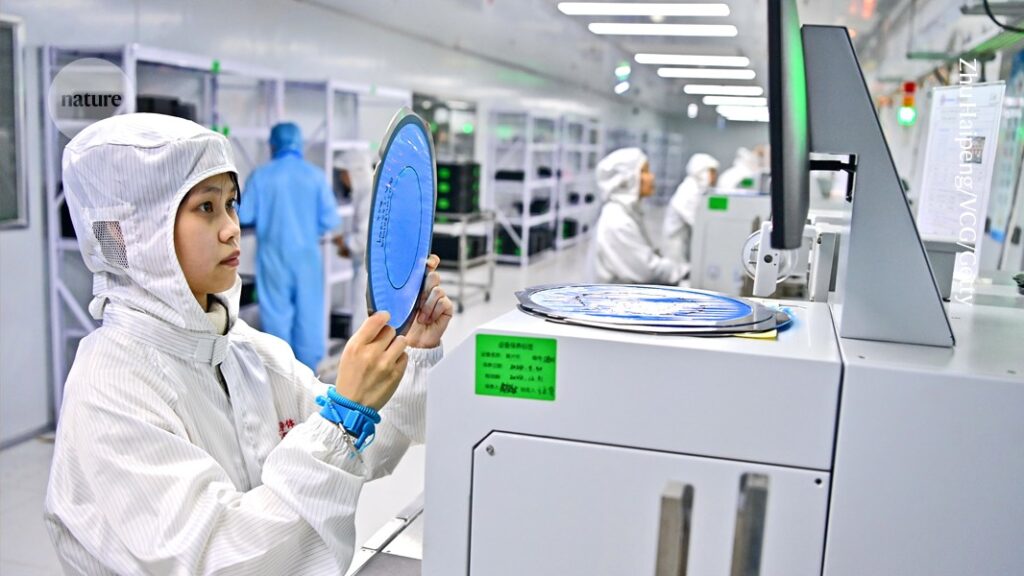The Chinese government will boost support for the development of advanced semiconductor technologies. Credit: Zhu Haipeng/VCG/Getty
China’s top leaders convened in Beijing this week for a high-level political meeting to map out the country’s next five-year plan (FYP), which runs from 2026 to 2030.
During this period, the country aims to achieve greater self-reliance in science and technology, develop innovation-driven industries and “key core technologies”, notes a communique released after the meeting on Thursday. The plan — the 15th in China’s history — is expected to be released early next year.
The government intends to increase its support for advanced semiconductor technologies, artificial intelligence (AI) and basic research, said Yin Hejun, the Chinese minister for science and technology, at a press conference in Beijing on Friday. Researchers say this is part of China’s effort to overcome technological bottlenecks.
Huang Baorong, a researcher of sustainable development policies at the Chinese Academy of Sciences in Beijing, expects China will increase its science-related investments over the next five years. This could help to offset some of the impact of the US government’s anticipated budget cuts to science, particularly in areas such as climate change and public health, Huang says.
China’s annual research and development (R&D) expenditure has skyrocketed over the past two decades. Last year, it spent more than 3.6 trillion yuan (US$505 billion), up 8.9% from 2023 and a sixfold jump compared with 2009. The Chinese government is the world’s biggest R&D spender.
China’s five-year plans are a comprehensive policy blueprint aimed at guiding the country’s economic and social development. The plan is a guide for the various levels of government to design policies for the short to medium term.
Chip independence
Significant resources will probably be devoted to addressing bottlenecks in the making of advanced semiconductors, says Hu Guangzhou, an economist at the China Europe International Business School in Shanghai.
Semiconductor chips, which power electronic devices, crucial infrastructure and military systems, are at the heart of an ongoing US–China ‘tech war’. The United States has blocked China’s direct and indirect access to its advanced chips as well as related technology and tools, citing national security risks.
Chinese scientists consider the years between now and 2035 crucial for the country’s chip independency. “We can hopefully leapfrog the west in the chip sector with another five or ten years of effort,” Dou Qiang, chief scientist at Phytium Technology, a chipmaker in Tianjin, China, told state-run China National Radio last week.
Focus on AI
Advanced chips lay the foundation for another industry expected to feature heavily in China’s 15th FYP: AI. “As one of the most transformative general-purpose technologies in recent history, AI will undoubtedly continue to receive robust policy backing,” Hu says.
Yin said the government plans to draft a top-level policy framework for AI, which will focus on the development of new models and advanced computing chips.
China is focusing on integrating AI models and applications into its economy, says Philipp Boeing, an economist specializing in innovation at ZEW–Leibniz Centre for European Economic Research in Mannheim, Germany. The country launched in August an ‘AI+’ campaign to accelerate the deep integration between AI and key sectors through to 2035. This is a different strategy to the United States, which is also seeking to be global leader in AI. “In the US, companies want to have the best AI models possible,” Boeing says. Humanoid robots, 6G communications and clean tech are also expected to be priorities for the 15FYP, he adds.

